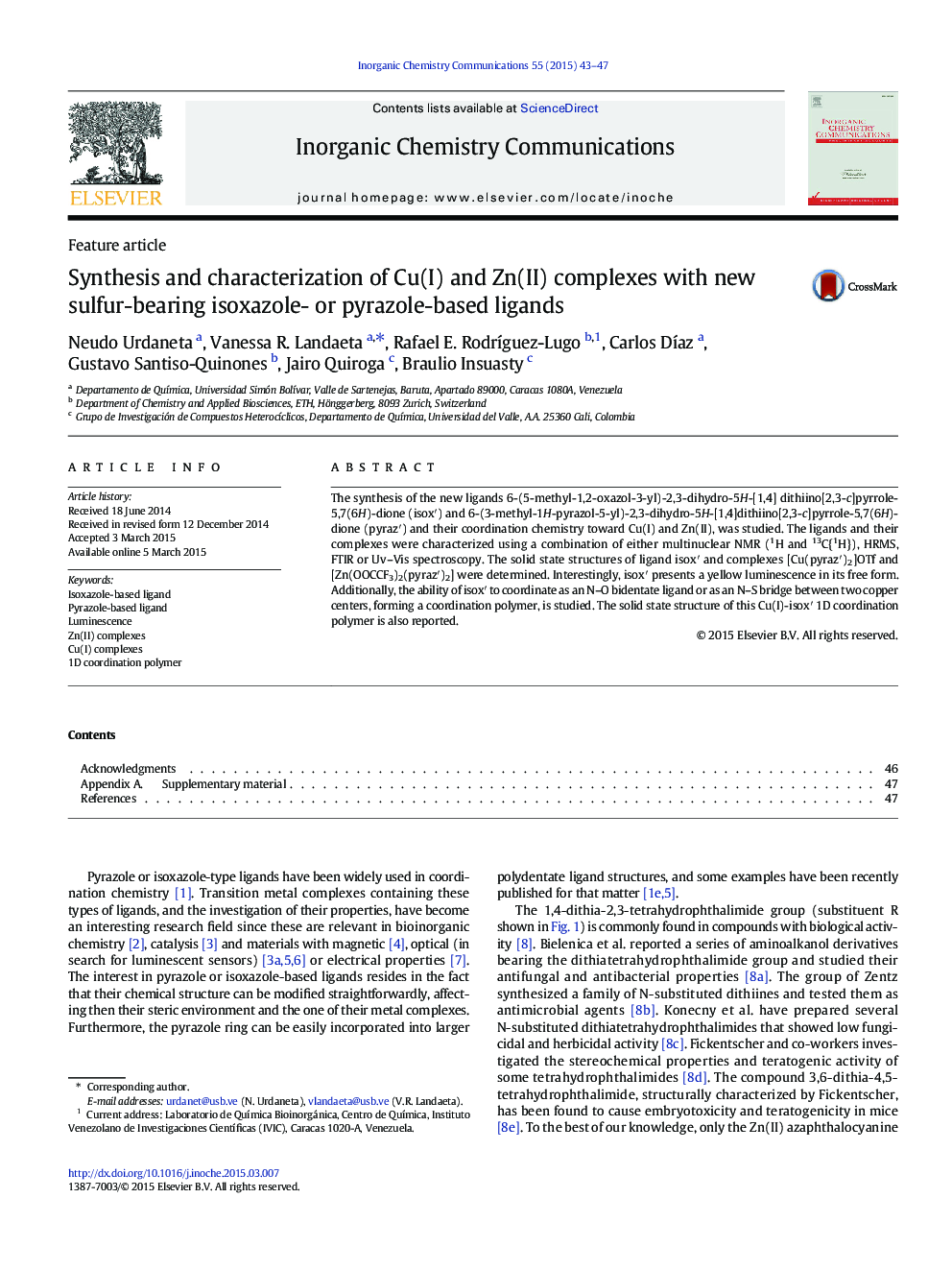| Article ID | Journal | Published Year | Pages | File Type |
|---|---|---|---|---|
| 1305425 | Inorganic Chemistry Communications | 2015 | 5 Pages |
•Two new isoxazole or pyrazole-based ligands were synthesized and characterized.•The chemistry of the new ligands toward Cu(I) or Zn(II) was investigated.•The new ligands are potentially polydentate through the N, O or S atoms.•A 1D coordination polymer is formed between Cu(I) and isox′.•poly-[Cu(isox′)2]OTf resembles a metallorganic-based molecular wire.
The synthesis of the new ligands 6-(5-methyl-1,2-oxazol-3-yl)-2,3-dihydro-5H-[1,4] dithiino[2,3-c]pyrrole-5,7(6H)-dione (isox′) and 6-(3-methyl-1H-pyrazol-5-yl)-2,3-dihydro-5H-[1,4]dithiino[2,3-c]pyrrole-5,7(6H)-dione (pyraz′) and their coordination chemistry toward Cu(I) and Zn(II), was studied. The ligands and their complexes were characterized using a combination of either multinuclear NMR (1H and 13C{1H}), HRMS, FTIR or Uv–Vis spectroscopy. The solid state structures of ligand isox′ and complexes [Cu(pyraz′)2]OTf and [Zn(OOCCF3)2(pyraz′)2] were determined. Interestingly, isox′ presents a yellow luminescence in its free form. Additionally, the ability of isox′ to coordinate as an N–O bidentate ligand or as an N–S bridge between two copper centers, forming a coordination polymer, is studied. The solid state structure of this Cu(I)-isox′ 1D coordination polymer is also reported.
Graphical abstractThe synthesis of the new nitrogen-based ligands isox′ and pyraz′, and their coordination chemistry toward Cu(I) and Zn(II), is described. The solid state structures of isox′, [Cu(pyraz′)2]OTf and [Zn(OOCCF3)2(pyraz′)2] were determined. Isox′ can also coordinate as an N–S bridge, forming a 1D coordination polymer, as evidenced by its solid state structure.Figure optionsDownload full-size imageDownload as PowerPoint slide
